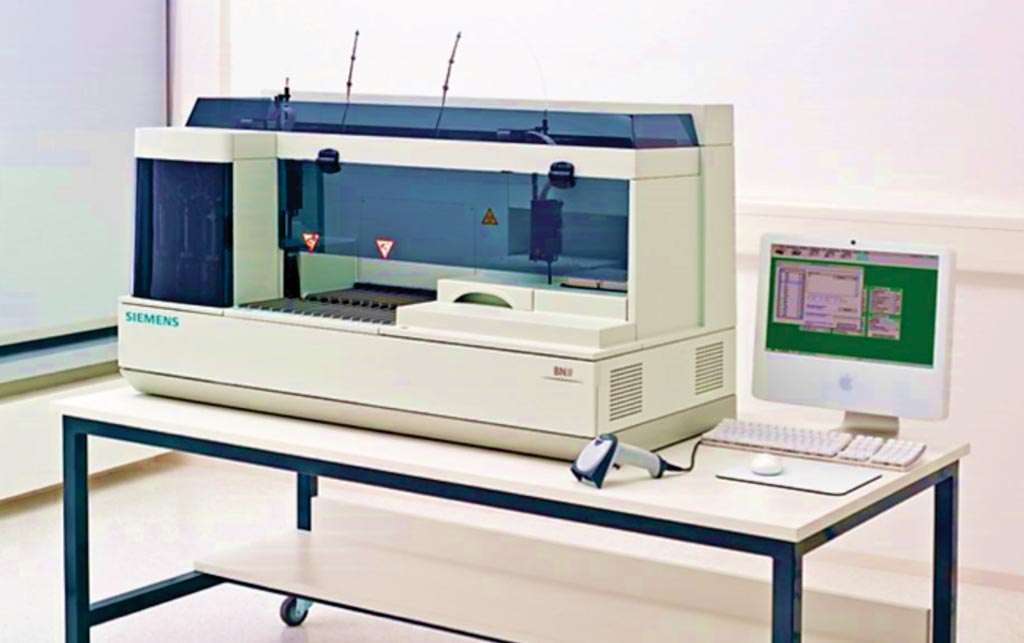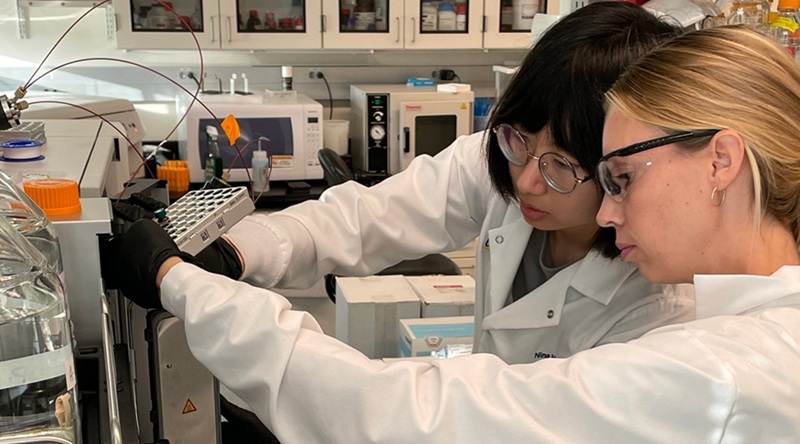Urinary Biomarkers Associated with Kidney Disease Risk Factors
By LabMedica International staff writers
Posted on 14 Jan 2019
The improved life expectancy among treated human immunodeficiency virus (HIV)-positive patients has been tempered by the excess burden of age-related non-infectious co-morbidities, including chronic kidney disease (CKD).Posted on 14 Jan 2019
In this HIV-positive population, CKD results not only from traditional risk factors, such as diabetes and hypertension, but also from HIV-related risk factors, including uncontrolled viremia, chronic co-infection with hepatitis C virus (HCV), and exposure to potentially nephrotoxic antiretroviral (ART) medications.

Image: The BN II Nephelometer System is an easy-to-use, reliable nephelometric analyzer that offers a broad range of protein assays (Photo courtesy of Siemens Healthcare).
Scientists at the San Francisco Veterans Affairs Medical Center (San Francisco, CA, USA) and their colleagues carried out a cross-sectional study of HIV-positive persons in the Multicenter AIDS Cohort Study and the Women’s Interagency HIV Study. Of the 198 participants, one third were on HAART and virally suppressed. The team evaluated associations of known CKD risk factors with urine biomarkers using separate multivariable adjusted models for each biomarker.
The scientists measured levels of 14 urine biomarkers in clean catch urine specimens that were collected prospectively, refrigerated immediately after collection, and subsequently centrifuged. Each hypothesized urine biomarker was to indicate a distinct dimension of kidney injury and dysfunction. All urine biomarkers were measured using multiplex immunoassays from Meso Scale Discovery (MSD, Rockville, MD, USA), except urine creatinine which was measured using the Roche enzymatic creatinine assay and α1-microglobulin (α1m), which was measured using a commercial assay.
The team reported that the vast majority (95%) had preserved kidney function as assessed by serum creatinine, with a median eGFR of 103 mL/min/1.73 m2. In the multivariable analyses, the associations of each CKD risk factor with urinary biomarker levels varied in magnitude. For example, HIV viral load was predominantly associated with elevations in interleukin (IL)-18, and albuminuria, while higher CD4 levels were associated with lower monocyte chemoattractant protein-1 (MCP-1) and β2-microglobulin. In contrast, older age was significantly associated with elevations in α1-microglobulin, kidney injury marker-1, clusterin, MCP-1, and chitinase-3-like protein-1 levels, as well as lower epidermal growth factor, and uromodulin levels.
The authors concluded that among HIV-positive persons, CKD risk factors are associated with unique and heterogeneous patterns of changes in urine biomarkers levels. The findings highlight the potential clinical utility of routine measurement of multiple biomarker levels. Additional work is needed to develop parsimonious algorithms that integrate multiple biomarkers and clinical data to discern the risk of overt CKD and its progression. The study was published on January 3, 2019, in the journal BMC Nephrology.
Related Links:
San Francisco Veterans Affairs Medical Center
Meso Scale Discovery




 assay.jpg)









